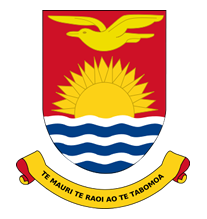Kiribati: Government
Key Figures
- Chief of State:
- President Taneti Maamau
- Head of Government:
- President Taneti Maamau
Overview
- Government Name:
- Republic of Kiribati
- Constitution:
- Adopted: 1979; Contains provisions relating to citizenship of Kiribati, the special status of Banaba and the Banabans, and fundamental rights and freedoms of the individual.
- Government Type:
- Presidential Republic

Index of Economic Freedom
Country Risk Rating
Government Branches
| Main Powers | Election Process | Election Cycle 1 | |
|---|---|---|---|
| Executive | In charge of the state and government and is responsible for the executory tasks of the executive branch. Appoints the cabinet. |
Plurality vote. |
4 years |
| Judicial | In charge of interpreting the constitution and has jurisdiction over all courts. |
The president appoints the chief justice on the cabinet's advice in consultation with the Public Service Commission (PSC). Other judges are appointed by the president on the advice of the chief justice along with the PSC. |
Information not available |
| Legislative | Nominates up to 4 members to run for president, creates legislature, and can overturn the executive veto with a 2/3 majority. |
The House of Assembly has 45 members, with 44 seats are elected in single and multi-member constituencies and one appointed by the Rabi Council of Leaders. |
4 years |
Regional Trade Blocs
No Regional Trade BlocsInternational Organization Participation [2]
Environmental Agreements [3]
Tax Information [2]
- Tax Authority:
- Information not available
- Tax Name:
- Information not available
Sources:
- ElectionGuide http://www.electionguide.org/
- EY, http://www.ey.com
- CIA World Factbook, https://www.cia.gov/the-world-factbook/
- U.S. Bilateral Relations Fact Sheets http://www.state.gov/r/pa/ei/bgn/


